pope benedict xvi
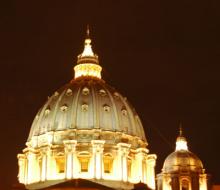
VATICAN CITY — As of 8 p.m. on Feb. 28, Pope Benedict XVI will no longer be pope and the Vatican will go into “sede vacante” mode — a Latin expression that means that the seat of St. Peter is vacant.
So who’s in charge until a new pope is chosen? The “interregnum” between two popes is governed by ancient rituals and by institutions half forgotten even within the Vatican.
But it is also the only time that the Catholic Church comes close to vaguely resembling a democracy, with the College of Cardinals acting somewhat like a Parliament with limited powers as it prepares to choose the new pontiff in a closed-doors conclave.
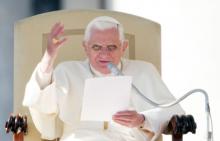
When Cardinal Joseph Ratzinger was elected Pope Benedict XVI in 2005, the surprising choice cast a pall over the liberal wing of the flock and left conservatives giddy with the prospect of total victory. Ratzinger had for decades served as the Vatican’s guardian of orthodoxy, the man known as “God’s Rottweiler,” and his vocal fans were crowing about the glorious reign to come.
“He’ll correct the lackadaisical attitudes that have been able to creep into the lives of Catholics,” the Rev. M. Price Oswalt, an Oklahoma City priest who was in St. Peter’s Square that April day, told The New York Times. “He’s going to have a German mentality of leadership: either get on the train or get off the track. He will not put up with rebellious children.”
Now, however, with Benedict set to leave office eight years later in an unprecedented departure, many on the Catholic right are counting up the ways that Benedict failed them, and wondering how their favorite watchdog turned into a papal pussycat.
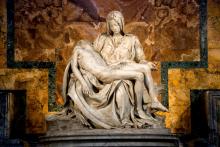
For the first time in six centuries, the head of the Catholic Church is stepping down. Some, like Huffington Post Religion’s Senior Editor Paul Raushenbush, have suggested this is an indication that the stodgy religious institution is creeping its way toward modernism. Could it be that the role of Pope will be considered to be that more like a CEO than a sovereign ruler? Is there room within today’s church for its leadership to step down when they feel they can no longer adequately fill the tremendous demands heaped upon them?
Can Popes retire? And if so, do they have to give up those cool red shoes?
So if, indeed, the Catholic Church is moving in a new direction, why not consider a more thorough overhaul? Some have suggested that the next Pope should come from the southern hemisphere, given that this is where the faith is growing the most (actually, it’s not really growing much at all in the northern half of the world). But as some have suggested within the church, the process of selecting a Pope is not necessarily driven by creating a representative leadership.
That said, it seems a rare opportunity to do something exciting. I, like many people, assumed that the successor to Pope Benedict would have to come from within the College of Cardinals. But though this has been tradition for most of the life of the Church, Pope Clement V is a rare exception. He was plucked from a monastery to become Pope, with the hope of overcoming much of the perceived corruption within the College.
And though the College of Cardinals is not explicitly mired in scandal at the moment, the Church itself certainly has suffered some blows in the court of public opinion, as well as in the court of law, in some cases. So given that precedent, perhaps it’s time for another radical departure from tradition, one that will signal to the world that the Church is more committed than ever before to its mandate to care for the poor, and support the marginalized.
Not all Catholics appreciated Pope Benedict XVI’s staunch defense of Christian orthodoxy, traditional marriage, and life from conception to natural death. But American evangelicals sure did.
As word spread on Monday of Benedict’s resignation, many evangelicals lamented the impending loss of a powerful spokesman for their conservative causes.
“Pope Benedict XVI has exemplified moral courage and an unwavering commitment to the Gospel message,” said Ralph Reed, chairman of the Faith & Freedom Coalition, a conservative Christian political group.
“We honor him for his lifelong service to the Lord and his inestimable intellectual contribution to Christian orthodoxy.”
The high praise — “evangelical Benedictions,” you might say — extended beyond U.S. borders as well.
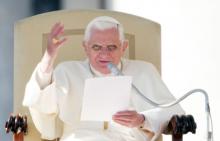
Pope Benedict XVI came into office with the reputation of a conservative hardliner, a vigorous defender of orthodoxy who wanted to restore Tradition — yes, with a capital “T” — to a church that was seen as disturbingly undisciplined.
Yet with the stunning announcement that he is resigning as the 264th successor to Saint Peter, Benedict may wind up fundamentally changing the way the church and the world view the papacy.
That’s because the papacy has come to represent more than an office, and the pope more than just a higher-ranking priest or bishop who enjoys lifetime tenure, a nice Vatican apartment, and the privilege of wearing a white cassock no matter the season.
Instead, the papacy is seen as a divine mission unlike any other in the church, and one that ends only in death.
“Christ did not come down from the cross,” the late John Paul II, Benedict’s immediate predecessor, would tell aides who wondered if his failing health and public suffering should compel him to relinquish his office.
A man is elected pope by the cardinals, yes, but at the behest of the Holy Spirit, according to Catholic theology. He takes a new name, and can’t even go home to collect his things: He moves into the Vatican right away, inhabiting a new identity in a new position — so superior that canon law says a pope can resign, but says he cannot resign to anyone.
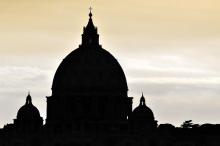
Pope Benedict XVI’s sudden announcement that he would resign by the end of the month took the church and the world by surprise, in large part because it was a move without precedent in the modern world.
But what comes next is as old and familiar as the papacy itself: Speculating about who will succeed to the Throne of St. Peter.
Indeed, within months of Benedict’s own election in 2005, church insiders and online oddsmakers were trying to figure out who might be next, given that Benedict — now 85 — was already aging, increasingly frail, and had himself declared that he did not expect his reign to be a long one.
So what will happen when the world’s cardinals gather before the splendor of Michelangelo’s Last Judgment fresco in the Sistine Chapel to elect a new pope? Who are the “papabile,” as the Italians say, the “pope-able” cardinals?
Will the conclave make the epochal break with the European monopoly and pick a cardinal from Latin America or Africa? The Catholic Church is booming in the Southern Hemisphere, as opposed to Europe and North America, where it is on life-support or barely treading water.
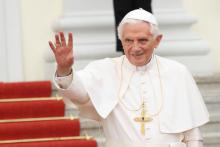
VATICAN CITY — Pope Benedict XVI will soon become the first pope to resign since 1415, short-circuiting many of the initial stages of electing a new pope. But the Vatican says the transition to a new papacy shouldn’t be all that different from normal.
Of course, the traditional rituals associated with confirming the death of a pope and planning his funeral will not be necessary. But the process outlined below, rife with secrecy and tradition, will largely follow centuries-old protocol.
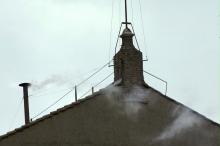
Following is a brief explanation of the process used in a conclave to elect a new pope.
Q: Who governs the church until a new pope is elected?
A: Day-to-day operations are handled by the Vatican curia, the central bureaucracy. All prelates who head Vatican agencies resign after the death or resignation of a pope. Provisions are made to oversee the papal household, the spiritual needs of Romans and to grant absolutions.
Q: What does the word “conclave” mean?
A: The word comes from the Latin, “with a key,” referring to the tradition of locking the doors until cardinals elect a winner.
Q: Who is eligible to be elected pope?
A: Technically, any baptized male Catholic is eligible, provided he is not married and in good standing with the church. Since 1378, however, new popes have come from within the College of Cardinals.
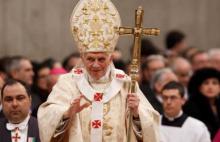
VATICAN CITY — In a move that took the world by surprise, Pope Benedict XVI announced on Monday that he will become the first pope in 600 years to resign, with plans to step down on Feb. 28.
“After having repeatedly examined my conscience before God, I have come to the certainty that my strengths, due to an advanced age, are no longer suited to an adequate exercise of the Petrine ministry,” Benedict told cardinals as they gathered in Rome for the proclamation of new saints.
Vatican spokesman Rev. Federico Lombardi said preparations for the conclave that will elect Benedict’s successor are in the early stages.
A papal election could be expected “within 10 to 15 days,” he said. “We should have a new pope by Easter.”
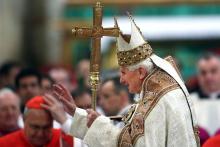
Pope Benedict XVI announced today he will step down on Feb. 28, citing his advanced age. The head of the Catholic Church is 85 years old. Below is the text of his announcement.
Dear Brothers,
I have convoked you to this Consistory, not only for the three canonizations, but also to communicate to you a decision of great importance for the life of the Church. After having repeatedly examined my conscience before God, I have come to the certainty that my strengths, due to an advanced age, are no longer suited to an adequate exercise of the Petrine ministry. I am well aware that this ministry, due to its essential spiritual nature, must be carried out not only with words and deeds, but no less with prayer and suffering. However, in today's world, subject to so many rapid changes and shaken by questions of deep relevance for the life of faith, in order to govern the bark of Saint Peter and proclaim the Gospel, both strength of mind and body are necessary, strength which in the last few months, has deteriorated in me to the extent that I have had to recognize my incapacity to adequately fulfill the ministry entrusted to me. For this reason, and well aware of the seriousness of this act, with full freedom I declare that I renounce the ministry of Bishop of Rome, Successor of Saint Peter, entrusted to me by the Cardinals on 19 April 2005, in such a way, that as from 28 February 2013, at 20:00 hours, the See of Rome, the See of Saint Peter, will be vacant and a Conclave to elect the new Supreme Pontiff will have to be convoked by those whose competence it is.
Dear Brothers, I thank you most sincerely for all the love and work with which you have supported me in my ministry and I ask pardon for all my defects. And now, let us entrust the Holy Church to the care of Our Supreme Pastor, Our Lord Jesus Christ, and implore his holy Mother Mary, so that she may assist the Cardinal Fathers with her maternal solicitude, in electing a new Supreme Pontiff. With regard to myself, I wish to also devotedly serve the Holy Church of God in the future through a life dedicated to prayer.
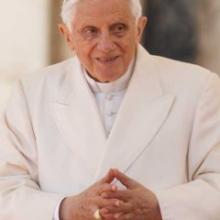
VATICAN CITY — Pope Benedict XVI has asked the Vatican’s highest appeals court to consider reviewing church rules on marriage annulments — a statement that may signal a change in tone more than a change in substance.
Speaking on Jan. 26 to the members of the tribunal of the Roman Rota, Benedict said that “lack of faith” on the part of the spouses can affect the validity of a marriage.
While the Catholic Church forbids remarried divorcees from taking Communion, church tribunals can declare a marriage void if it can be demonstrated that some key elements — such as a commitment to have children — were missing in the first place.
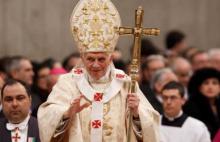
VATICAN CITY — The Vatican reaffirmed its commitment to dialogue with Jews on Monday after the head of a traditionalist breakaway group called them “enemies of the Church.”
The Vatican chief spokesman, the Rev. Federico Lombardi, said that it was “meaningless” and “unacceptable” to label Jews as “enemies” of the Catholic Church.
“Both Pope Benedict XVI and his predecessor John Paul II personally engaged in dialogue with Jews,” he said. As a sign of their commitment, Lombardi noted the two popes’ visits to Jerusalem’s Western Wall, Judaism’s most sacred site, and to synagogues in Rome and elsewhere.
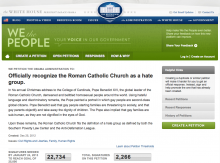
The White House’s novel online system for allowing citizens to petition the administration on any number of causes has led to various unintended consequences: petitions to secede from the U.S. following President Obama’s re-election; a petition for Vice President Joe Biden to star in a reality show; and a petition for the government to disclose its secret archives on extraterrestrials.
Now there is a petition to designate the Roman Catholic Church as a hate group for its opposition to gay rights, and it may wind up generating almost as many press releases as signatures.
The “We the People” petition was filed on Christmas Day and was prompted by Pope Benedict XVI’s Dec. 21 year-end address to Vatican administrators in which he denounced gay marriage as a threat to Western civilization.

VATICAN CITY — Exactly 500 years ago, on Oct. 31, 1512, Pope Julius II led an evening prayer service to inaugurate the Sistine Chapel and Michelangelo's newly-finished vault frescoes.
But as Pope Benedict XVI on Wednesday celebrated the 500th anniversary of the Renaissance masterpiece, the Vatican said the growing number of tourists who visit the historic site every year might eventually lead to limiting access to the chapel to help preserve the frescoes from human-born problems and pollutants.
“We could limit access, introducing a maximum number of entries,” wrote Antonio Paolucci, the director of the Vatican Museums, in L'Osservatore Romano, the Vatican's semi-official newspaper. “We will do this, if the pressure from tourism were to increase beyond a reasonable level and if we were to fail in resolving the problem efficiently.”
Paolucci stressed, however, that in his opinion such measures will not be necessary “in the short to medium term.”
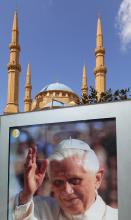
BEIRUT — As violent protests against an anti-Islam film spread to much of the Muslim world on Friday, Pope Benedict XVI arrived in Lebanon to a warm welcome from Christian and Muslim leaders.
The pontiff's appeal for peace and reconciliation in the region, however, stood in jarring contrast with violent clashes in the northern Lebanese city of Tripoli, which left one dead and 25 injured.
Landing at Beirut's airport in the early afternoon, Benedict praised Lebanon as an example of "coexistence and respectful dialogue between Christians and their brethren of other religions."
Without referring expressly to the unrest, the pope warned that the country's "equilibrium" is "extremely delicate."
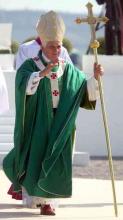
The Vatican confirmed on Wednesday that Pope Benedict XVI's visit to Lebanon will go ahead as planned, despite growing tension in the region after the killing of the U.S. ambassador to Libya by a mob enraged by an anti-Islam film.
The Vatican's chief spokesman, the Rev. Federico Lombardi, said the Vatican was closely monitoring developments in the region but there were no signs of specific security concerns for Benedict's trip so far.
Benedict is scheduled to leave Friday for a three-day visit to Lebanon despite rising instability spilling over from a deadly civil war in neighboring Syr
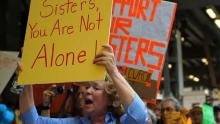
Fifty years after Pope John XXIII convened the Second Vatican Council to modernize the Roman Catholic Church, the legacy of that watershed summit that revolutionized Catholic life is at the core of a dispute between the Vatican and American nuns.
In April, the Vatican accused the Leadership Conference of Women Religious (LCWR), the umbrella group that represents the majority of American nuns, of “doctrinal confusion.” As LCWR leaders meet this week (Aug. 7-11) to plot their response to the Vatican, many of the sisters say they are just following the spirit of Vatican II.
“This is not just about the Vatican versus the nuns. This really is about the future of how we interpret the message of the Second Vatican Council,” Sister Maureen Fiedler told the PBS program “Religion & Ethics NewsWeekly.”

Amy and I have been working (translated: watching lazily) our way through the first several seasons of Mad Men. The writing is remarkably subtle, and I was particularly struck by the fact that such a long-standing show could effectively have little or no plot focusing instead on rich character development.
For a writer, this is like enjoying a gourmet meal every night.
But the cherry on top for me is the sprinkling of anachronisms that apparently made plenty of sense at the time, but which are shockingly out of place now. There was a scene of the main family in the park, and when they’re done, the mother gives the blanket a good flick and leaves all of their trash wherever it falls. There’s also the constant smoking, even around kids and by pregnant wives (the perfect antidote for nausea, apparently), drinking at work and brazenly racist comments as the cultural norm.
Hard to believe sometimes that this took place so recently that my parents were teenagers when it took place.
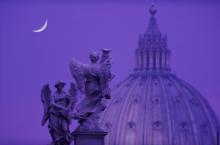
It seems the Sisters of North America are calling the Vatican out. When criticized by Vatican officials for taking a position too far left of center on a number of social issues, the Leadership Conference of Women Religious responded by calling the Vatican’s criticisms unsubstantiated and flawed.
But the rhetoric didn’t stay at the topical level. LCWR president Theresa Kane said (according to a Huffington Post report), "It is a matter of the men in the Vatican still thinking they can control the women. ... They don’t realize that we have moved to another whole point of tremendous equality and mutuality. And that we have much to say about our future and what’s going on.”
The Catholic Church, and the Pope in particular, embrace a number of socially redeeming virtues; equality and mutuality between the genders are not two of them.
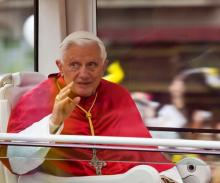
Nearly lost amid ongoing reports about the Vatican leaks scandal, Rome’s battle with American nuns, the American bishops’ battle for religious freedom, and the priest on trial in Philadelphia, was the news that, by the way, Pope Benedict XVI plans to visit Philadelphia.
Benedict made the announcement at the end of his visit to Milan on June 3 for the church’s triennial World Meeting of Families. The next meeting would be in Philadelphia in 2015, he said, and he planned to be there, “God willing.”
True, the trip won’t happen until 2015, and it may well not happen at all — Benedict would be 88 by then. Even if there's a new pope in 2015, the City of Brotherly Love is still almost assured of getting a papal visit — new popes like to underscore continuity, and respect the plans their predecessors had in place.
In a larger sense, the visit would be about more than promoting family life, and in many ways it's related to other Catholic issues now dominating the headlines. Here’s why.